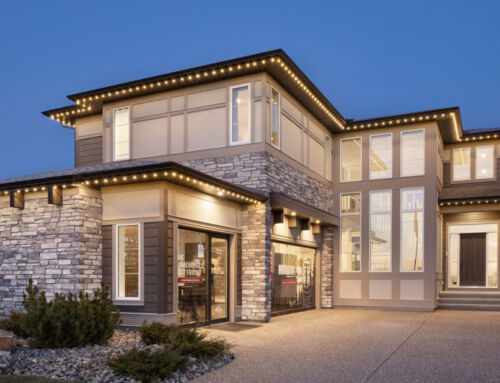Homes are designed to minimize unwanted moisture in the building and have different mechanisms to address that. The main barrier against bulk water entry is the roof, cladding, foundation, AND your home’s grading. Homes are not designed to be waterproof but do a very good job of resisting water from entering your home through bulk water shedding and the various construction details that make up the homes’ water defenses. All of these systems must be maintained throughout the life of the home to ensure water outside or beneath the home is effectively managed.
Wet basements can result in minimal water pooling or flooding conditions and can be sourced from surface water like rain and melting snow or flooding and it can come from subsurface water from rising water tables in the ground below the basement of your home.
Fortunately, most homes have a way to drain this water away. Weeping tile or other passive water collection devices are used to collect water at the home’s footing level and carried away either through gravity systems to municipal storm systems or to a sump pit where the water is then removed using a sump pump discharging the water either to the exterior of the home or to the municipal storm systems.
Your weeping tile or drainage device is designed to deal with subsurface water primarily. However, it can be overwhelmed by large amounts of surface water entering along the foundation wall creating flooding conditions in the home.
The most important defense your home has against having a wet basement is your grading around the home. Poorly landscaped or improperly maintained grading will allow thousands of liters of water to drain toward your home and adjacent to the foundation wall, with the potential of overwhelming your drainage system and causing a leak or flood to occur. All runoff or bulk water is meant to be shed away from the home and towards the municipal street drainage by means of positive drainage that is created by the grading requirements of your municipality.
Once a home has been purchased the responsibility falls to the homeowner to ensure that the grading is maintained and if altered by new landscaping it must follow these principles.
Grading must have a minimum positive slope away from the home and differs between sod and vegetation or concrete, brick and stone. Generally, the slope is between 2%-5%. The term clay cap means the dense clay soil that is compacted around the home and creates a positive slope away from the foundation. This is what builders use to create the rough grading around the new home. Garden soils or other loam-type products are not suitable to create the slope because of its water permeability and must be avoided. Where there is an appearance of a positive slope, but that slope is created by a permeable base like garden soil, water will not drain away from the home but be directed towards the foundation which can lead to a wet basement or worse. Directing water down the foundation to the soil that is supporting your home can weaken the area resulting in the home settling or can change the volume of the soil and lead to cracks in the basement floor and heaving.
Be sure to regularly check on these systems and for more information, see our Surface Water Management guidelines and our Care and Maintenance Guide for New Homeowners.







Connect